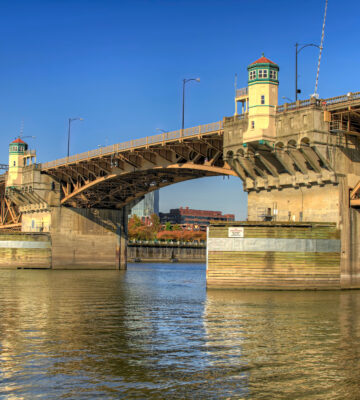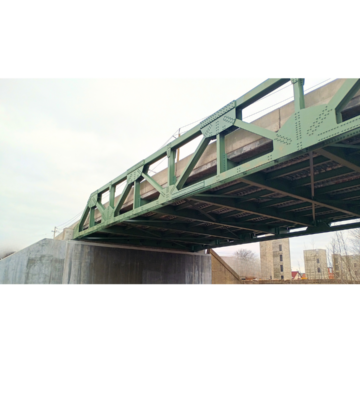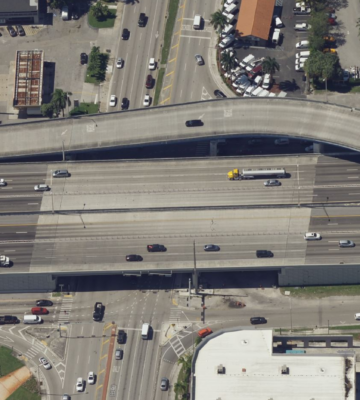As part of the Kew Gardens Interchange project, the 82nd Avenue Pedestrian Bridge required complete replacement due to structural deficiencies as well as geometric constraints of the newly replaced Van Wyck Expressway traveling beneath the pedestrian bridge. To facilitate expressway widening, a new bridge was required to connect local pedestrian traffic to nearby MTA subway stations across the expressway. The new bridge is a steel truss with a curved top chord and spans 225’, crossing eight traffic lanes with corresponding shoulders. It is supported on new reinforced concrete spread footing abutments placed behind new soldier pile and lagging retaining walls.
The pedestrian bridge was constructed as a critical phase in the staged construction of the interchange. Pedestrian traffic was temporarily detoured to the south, to the newly built Hoover Avenue Bridge, which is also part of the interchange construction. Once the expressway widening was completed and the retaining walls and abutments were installed, the new superstructure was erected in two sections using temporary supports and a corresponding superstructure splice in the center of the span to facilitate the erection of the bridge while maintaining vehicular traffic on the expressway beneath the bridge.
Aesthetically treated fencing and LED lighting were placed on the bridge to provide a structurally efficient and aesthetically pleasing bridge.
The Kew Gardens Interchange is the confluence of the Van Wyck Expressway, Grand Central Parkway, and Jackie Robinson Parkway. This three-level interchange also includes Union Turnpike and Queens Boulevard near the Briarwood–Van Wyck Boulevard NYCT Subway Station on the IND Queens Boulevard Line (E, F) and the 82 St Pedestrian overpass.




